Mercedes presents the electric G-Class
The EQG concept presented at the IAA Mobility 2021 already had four electric motors. These sit “close to the wheel”, i.e. not as wheel hub motors in the rim but in the vehicle frame. From there, they are connected to the wheel via a drive shaft. The advantage of this arrangement is that each electric motor can be controlled individually, which can be enormously helpful, mainly off-road. Mercedes still sees its G-Class as an off-road icon, even if today’s customers use the vehicle more like an SUV and rarely leave paved roads.
The four identical motors with 108 kW provide a combined output of 432 kW. The system torque even totals 1,164 Nm. The central drive control unit (CPC) is essential for coordinating the four engines. If the CPC distributes power optimally to utilise the traction, the electric G 580 can accelerate from a standstill to 100 kph in 4.7 seconds – the limit is 180 kph, which Mercedes regulates electronically.
The fine modulation and full torque from a standstill will be useful not only off the road, but also for handling on the street. The electric G-Class generates virtual differential locks by means of torque vectoring. For example, the wheels on the outside of the bend are assigned a higher but individually calculated torque, which provides support when cornering. As the drive control is fully automatic, there is no need to engage the differential locks manually – which was still necessary in the combustion model with mechanical all-wheel drive and differentials. However, one switch remains: The electric motors also have a mechanical “low range” gear; this off-road gear reduction can be activated at the touch of a button.





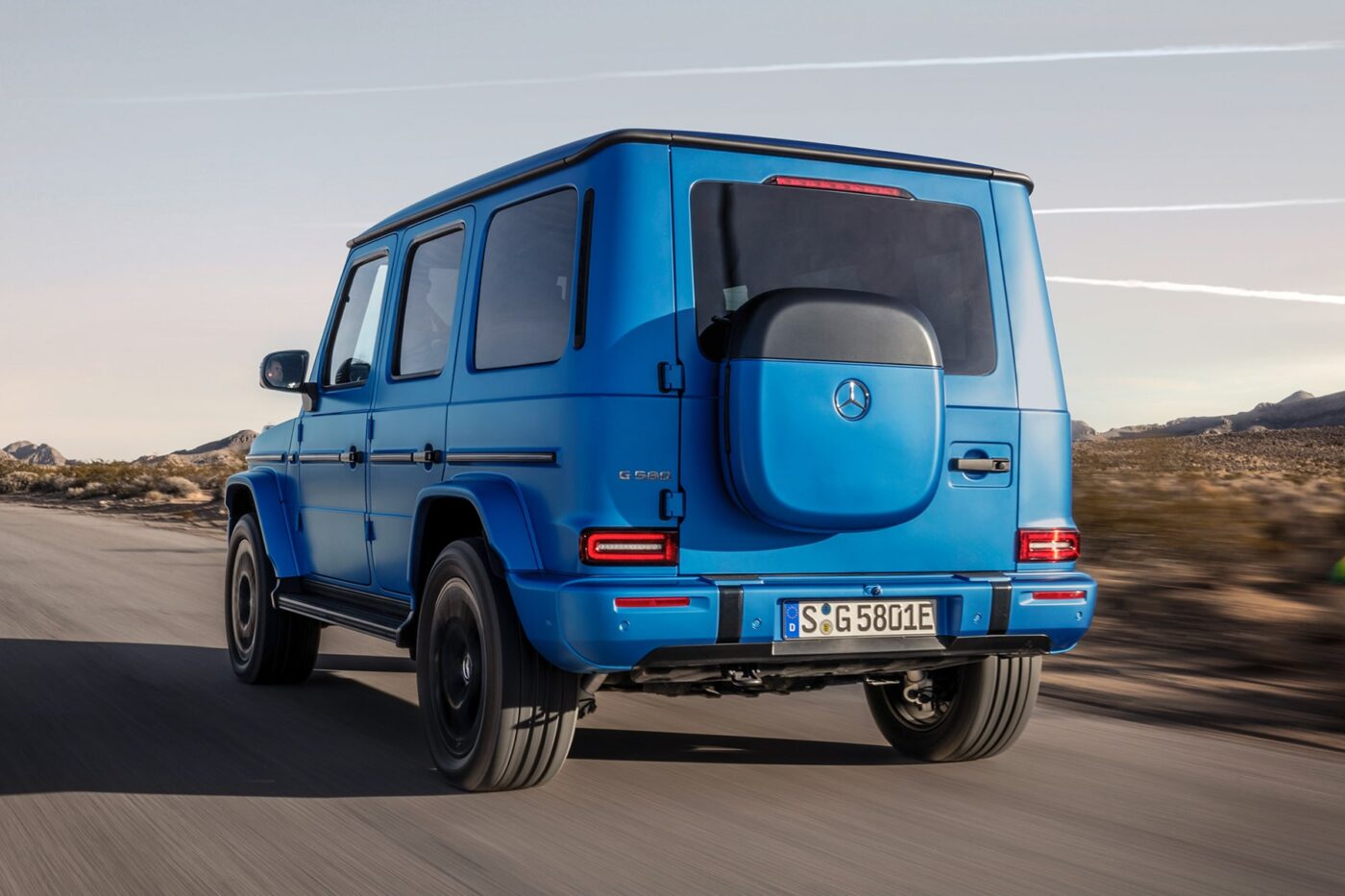



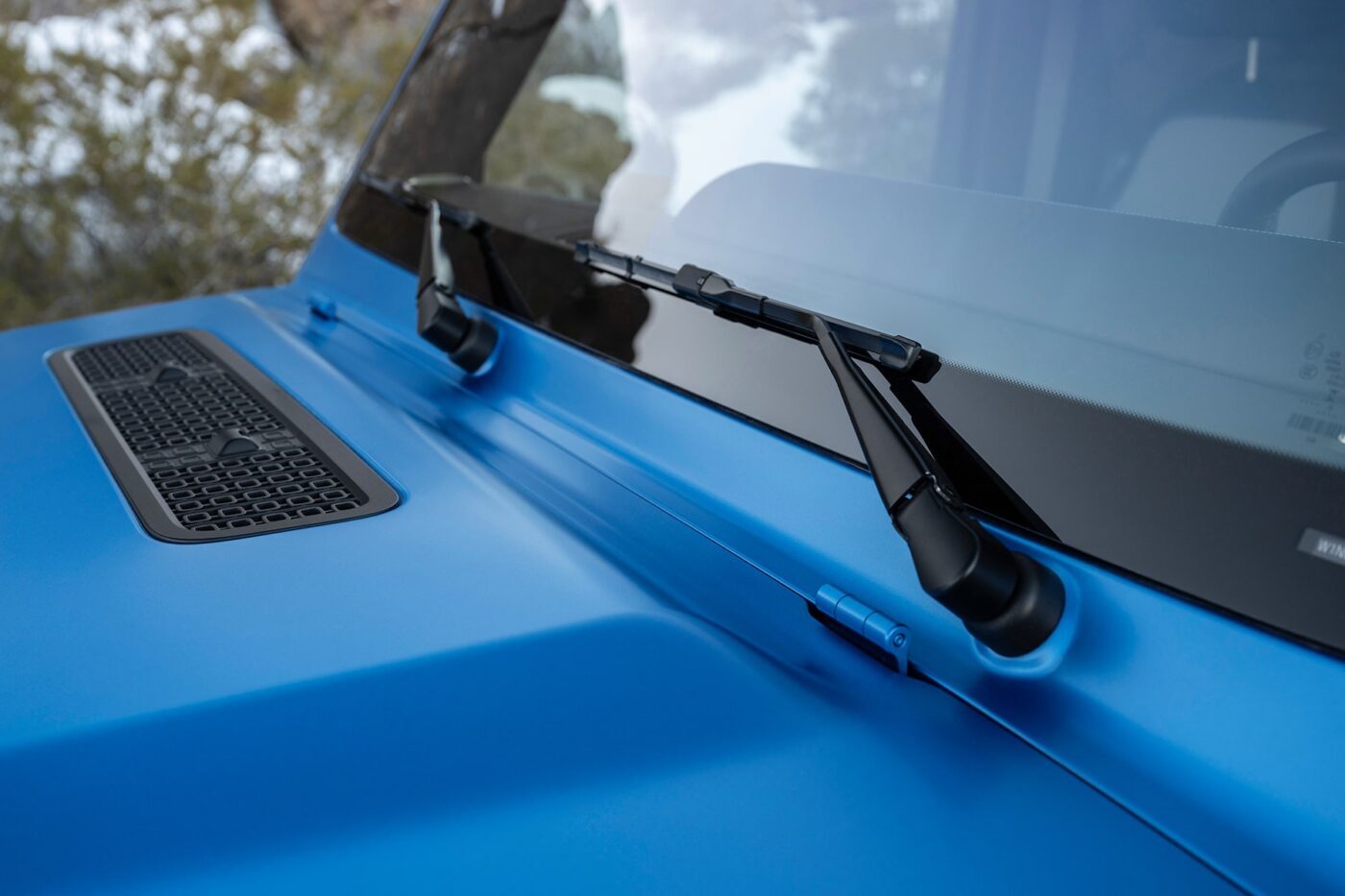
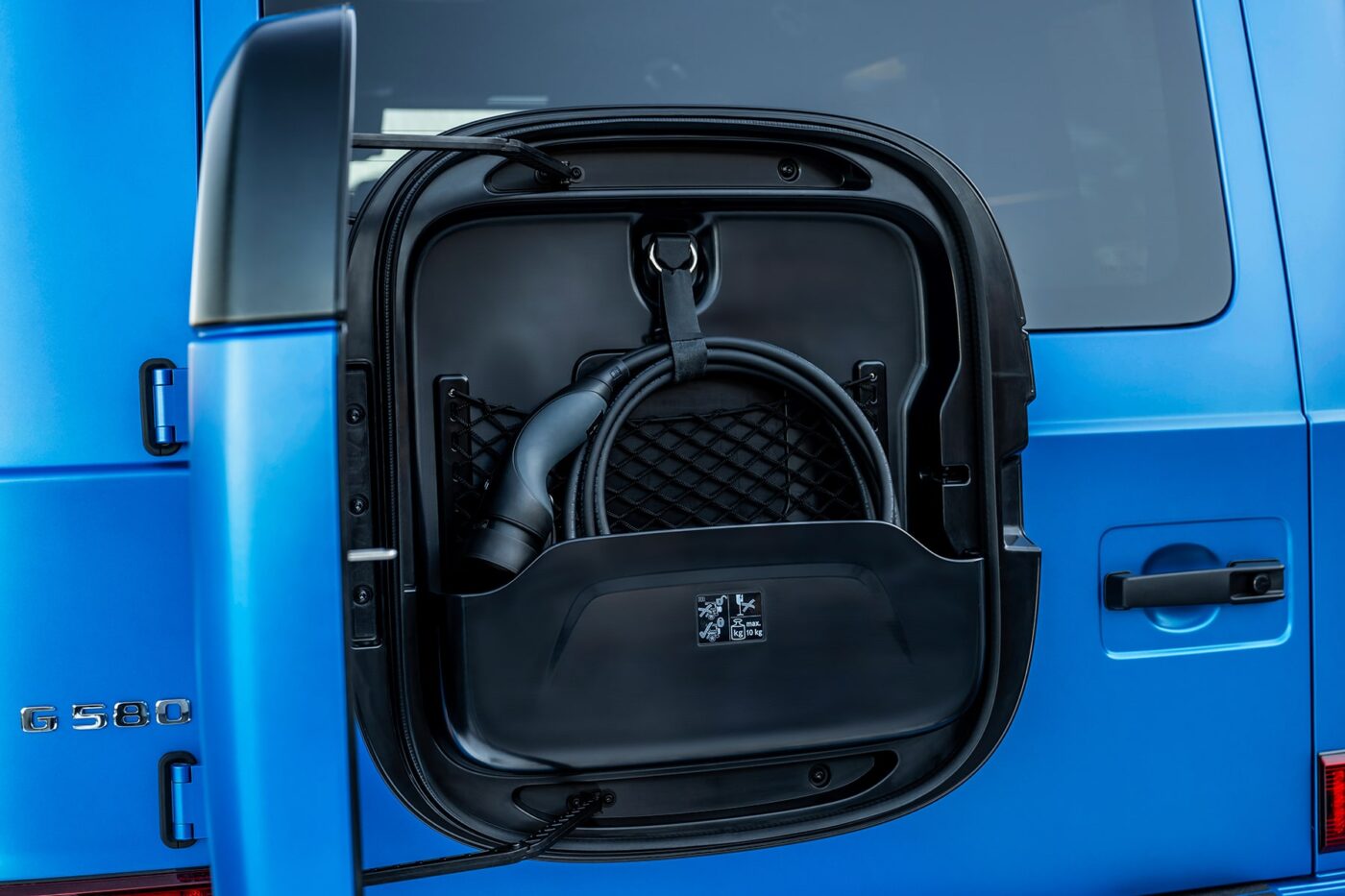

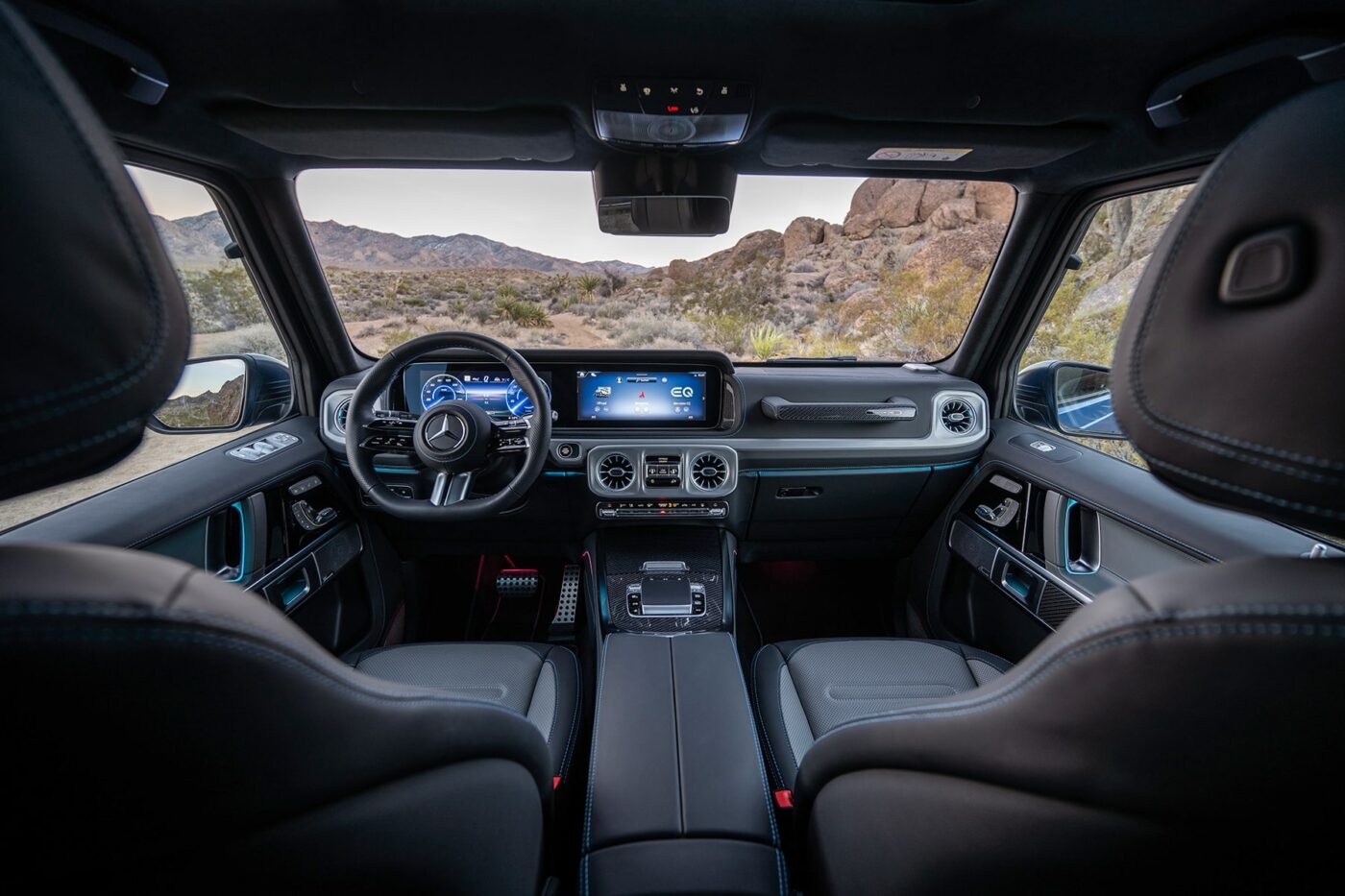
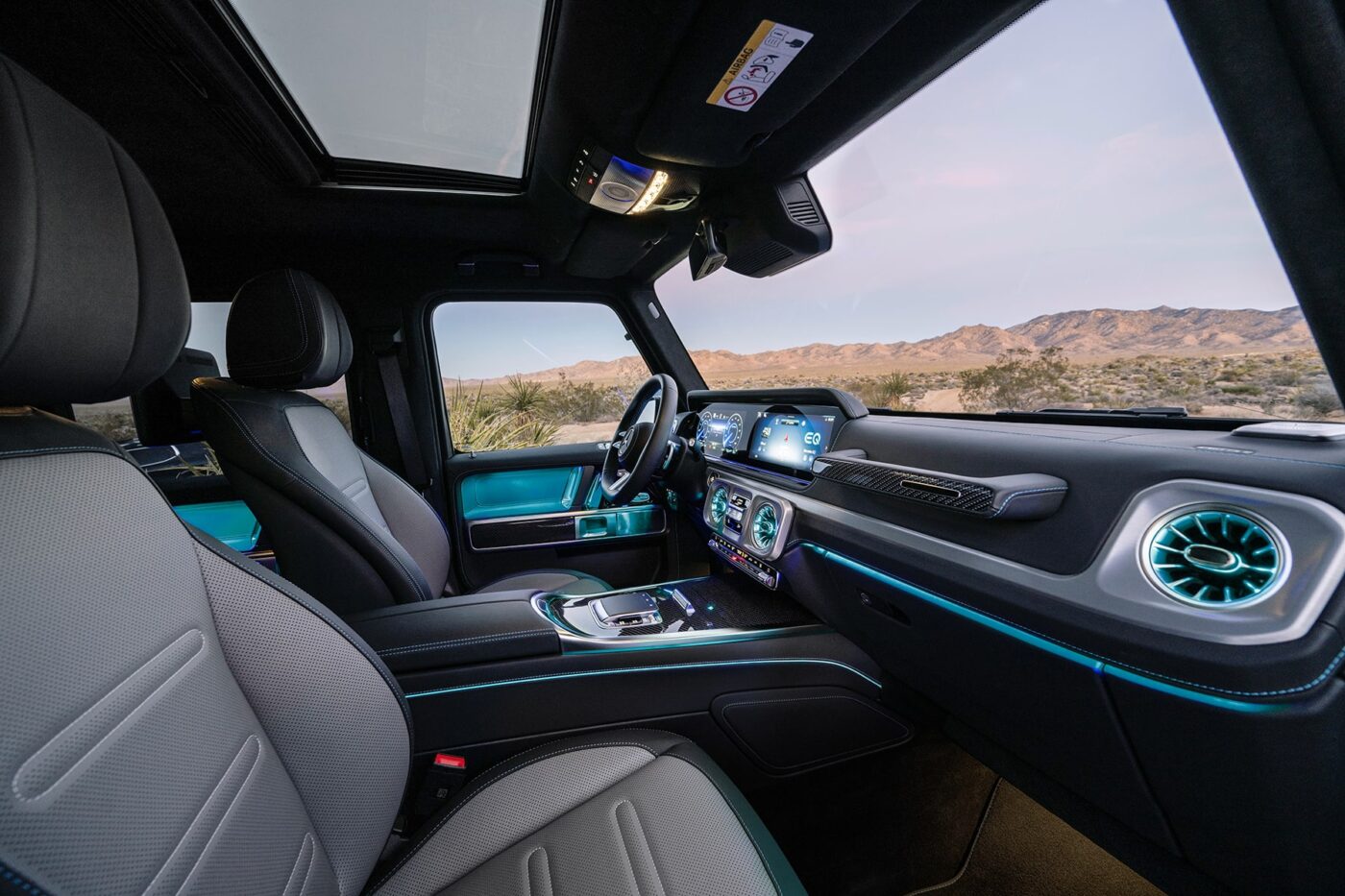
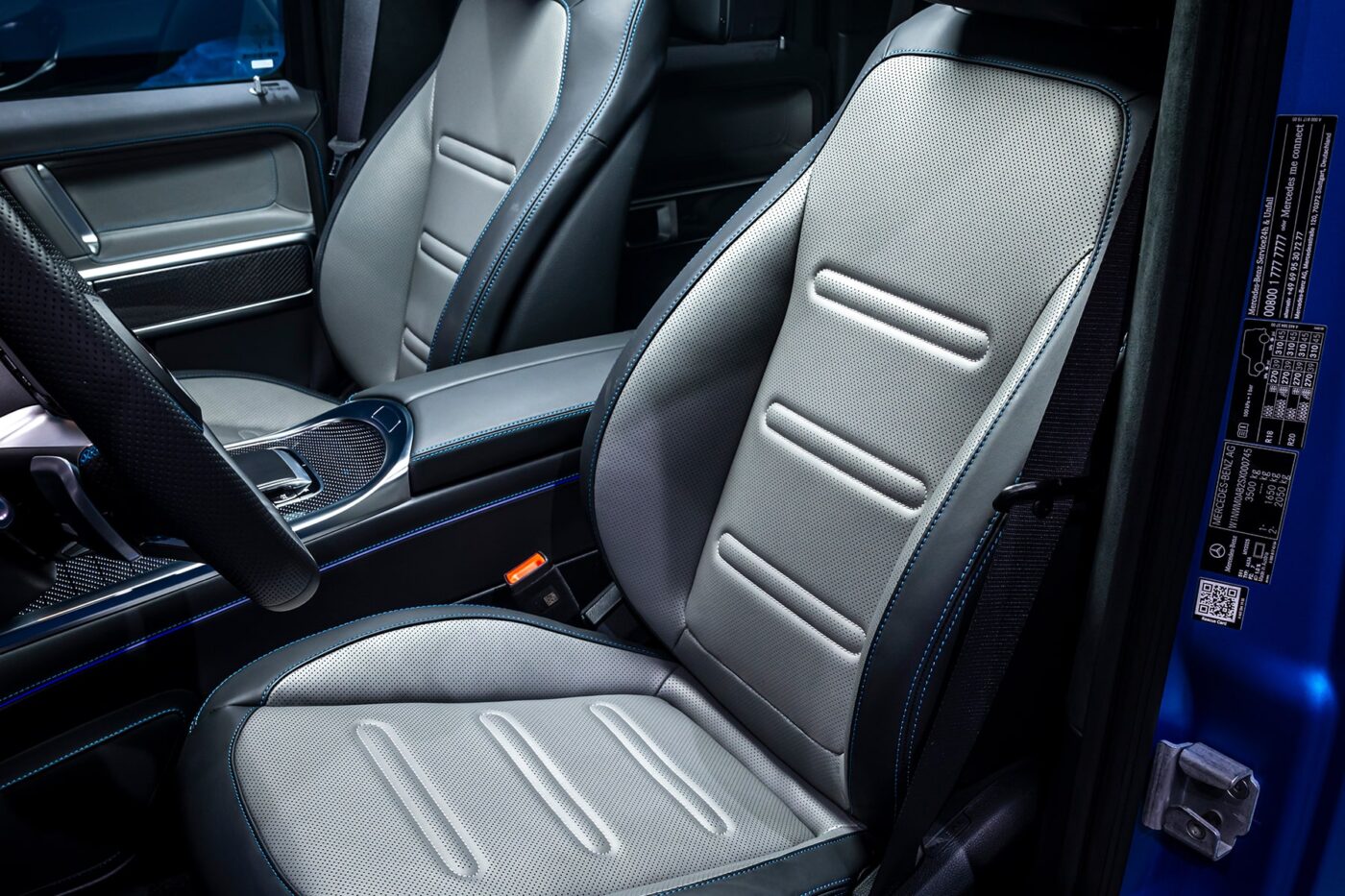
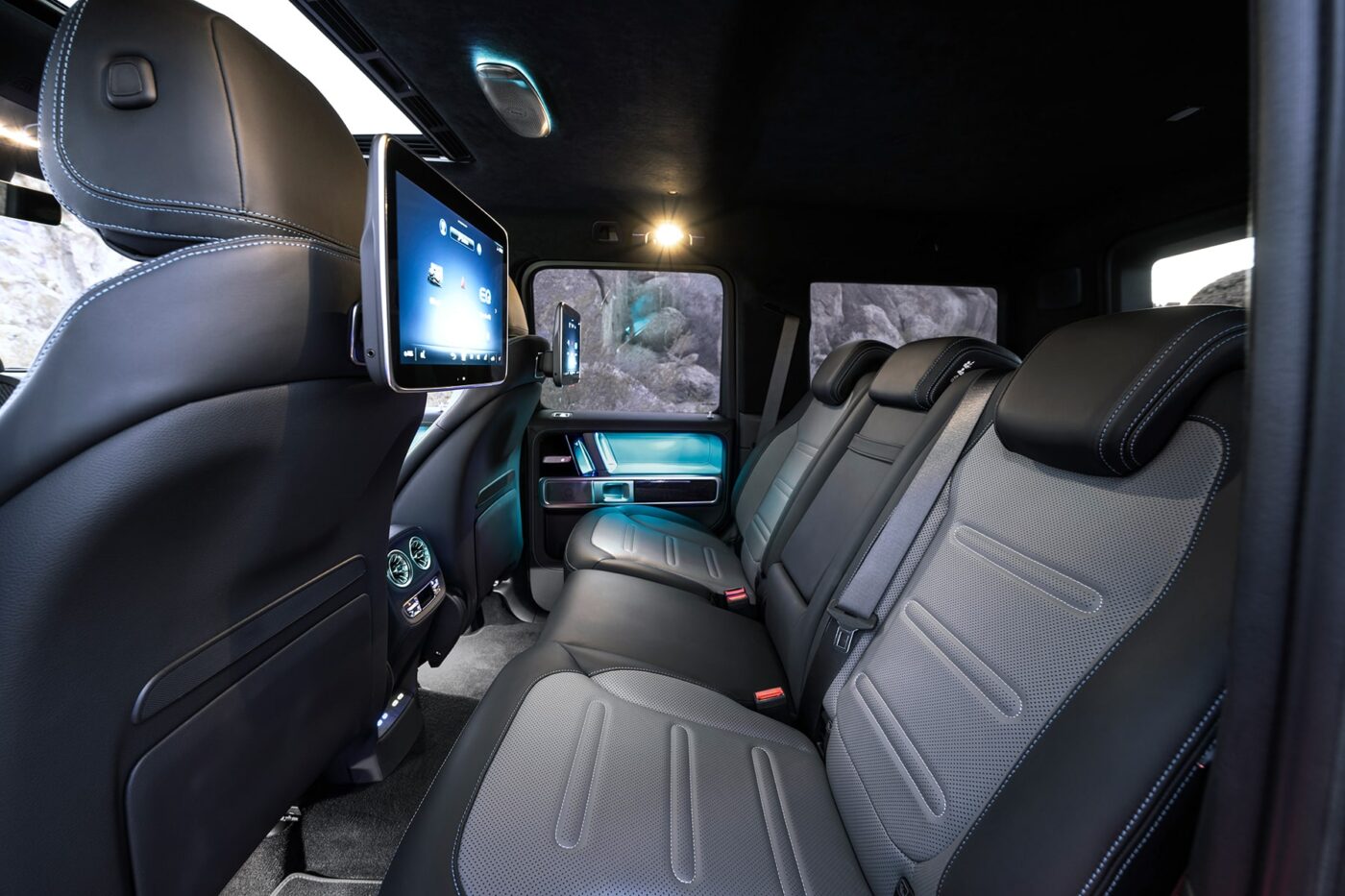

The battery has a usable capacity of 116 kWh, which is enough for a range of up to 473 kilometres, according to the WLTP. The WLTP consumption is already between 27.7 and 30.3 kWh/100 kilometres, depending on the equipment, though it is no surprise that the electric G-Class will not be an energy-saving model.
Mercedes does give some technical details about the battery. For example, 216 cells are installed in twelve modules, the modules themselves are arranged in two storeys – and there are also three cooling levels, i.e. below, between and above the module storeys. However, Mercedes does not pick up on one interesting aspect: At the time of the EQG concept, it was still said that the model would launch with a battery with silicon-containing anodes from Sila Technologies. But there is no mention of that now.
As with the other electric models, Mercedes will use a 400-volt system. That means the battery can be charged with a maximum of 200 kW at DC charging stations, which take around 32 minutes for the standard charging process from 10 to 80 per cent. As the 116 kWh are “usable”, the battery recharges 81.2 kWh during this time, resulting in an average charging capacity of 152 kW. An 11 kW charger is installed for AC charging, so the charging process will take just under 12 hours.
| G 580 with EQ Technology | |
|---|---|
| Drive | AWD |
| Power | 432 kW |
| Torque | 1,164 Nm |
| Acceleration | 4.7 s |
| Top speed | 180 kph |
| WLTP range | 473 km |
| Battery | 116 kWh |
| Charging capacity DC | 200 kW |
| Charging time DC 10-80% | 32 min |
| Price (in Germany) | 142,621.50 euros |
Mercedes also emphasises the electric G-Class’ underbody protection – an important component in off-road vehicles to protect the oil pan in combustion engines, for example. In an electric car, however, the battery must be protected against damage caused by contact. In the case of the G 580, this is achieved by means of a 25 millimetre thick and 57.6-kilogramme heavy underbody plate, which consists of “an intelligent mix of materials including carbon protects the battery from physical impact”. According to Mercedes, a comparable component made of pure steel would have weighed more than three times as much.
The electric G adopts the ladder frame design from the combustion engine models, the independent wheel suspension with double wishbones at the front, and rigid axle at the rear. However, it is not only the frame construction that is familiar, but also the design: “The all-new electric G-Class remains true to the model’s character, retaining its angular silhouette including all iconic elements”, Mercedes writes.
The front grille is closed in line with the “black-panel” look of the EQ models, and black elements surround the headlights. The round headlights and the chrome trim around the front grille also give the electric G-Class its familiar look. However, Mercedes has come up with a nice design detail: The box on the usual side-opening boot lid does not contain a spare wheel, but the charging cable. The charging port is located where the petrol filler cap is, above the right-hand rear wheel – apparently, the carmaker did not want to stray too far from the combustion engine design after all.
The new Mercedes-Benz G 580 with EQ technology will be available in Germany from €142,621.50. At Edition One, “a limited-edition model with an expanded palette of standard features and exclusive design elements,” will be available at market launch for a minimum of 192,524.15 euros.

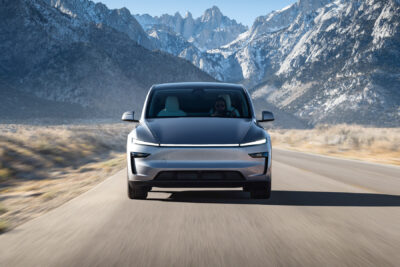


1 Comment